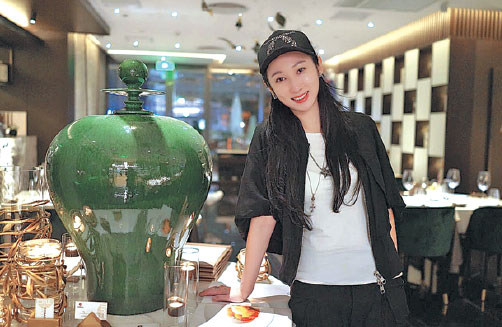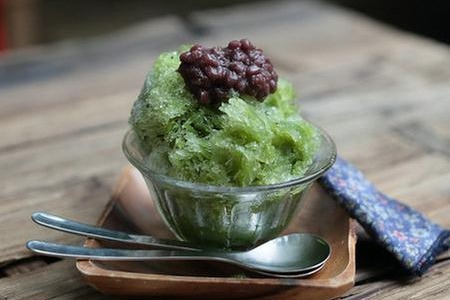Fine dining with new look, taste and feel

It's out with the white linen as a Beijing restaurant looks to include a touch of Zen at the table
When it comes to fine dining in Beijing, white tablecloths are often the calling card. Think of those traditional, formal French and Italian restaurants in five-star hotels in which the cuisine on offer is classic European fare. You can't really complain about that, even if sometimes it can seem a little humdrum.
Katie Li, a Chinese Australian restaurateur, reckons fine dining in Beijing is developing very slowly, particularly when compared with what is happening in Shanghai, and lags far behind Western countries.
"White tablecloths? That really is old hat," says Li, owner of the Tiago restaurant group, reflecting on a recent gourmet trip she made visiting some of the top fine dining restaurants in the world.
| The open kitchen at Combal by Tiago in COFCO Plaza in Jianguomen, Beijing. |
| Katie Li, owner of the Tiago restaurant group. Photos Provided to China Daily |
"Most of the tables were bare. In fine dining the trend is for fewer formalities and frills but more novelties and innovations."
Li is striving to have a role in redefining fine dining with the group's newly established restaurant that has been having a soft opening in COFCO Plaza in Jianguomen.
In Beijing, restaurants are still trying to produce so-called authentic Western food, but in the West more and more fine dining establishments have evolved into an eclectic blend of cuisines with an oriental twist, be it Chinese, Japanese or Vietnamese, Li says.
For her new restaurant, Combal by Tiago, Li says she wants to incorporate oriental cultural elements that are "decorous, mysterious and elegant" into fine dining.
At Combal, what you eat is European, yet what you feel is a Zen-style dining environment, with a decor that exudes oriental charm.
Tea is "a good representation of Chinese culture", Li says, and that is manifested in a decorative wall of shelves filled with various kinds of tea barrels, in the tea-infused cocktails on the menu - each name being a single Chinese character taken from archaic Chinese drinking terminology - and in the tableware with sauces presented in beautiful teacups and desserts coming in antique-furniture drawers.
The welcome snacks are presented on a plate mounted with pebbles, simulating a Chinese pond. The dish as a whole is like a miniature tranquil Chinese garden with garnishes with all the appearance of rockery and leaves.
"A city like Beijing has such a profound culture heritage, and we ought to have integrated more of our cultural elements into fine dining," Li says.
At Combal by Tiago, an innovative approach has been taken with each dish, some bold and some with a nuanced twist, but overall there has been a solid attempt to break away from old-style conventional fine dining.
The restaurant's name, Combal, a whimsical concoction evoking the idea of combining things, perfectly reflects the establishment's ethos, Li says.
As a stomach warmer there is a dish whose offbeat name tells you that you are about to be served something very unusual: egg in eggs. It is presented in a transparent tea bowl with a lid.

The style has echoes of the Japanese hot appetizer chawan-mushi (egg custard), but the contents are different: the base consists of scrambled Japanese eggs, then goes up to light potato sabayon, and then to whipped egg yolks, salmon roe and caviar on the surface. It is so soft that it is eaten with a spoon, and it is best to scoop out from the end to the surface. In one spoonful you will taste the different layers, mixing and melting on the tongue.
Then there is paccheri, a cylindrical pasta similar to rigatoni, but wider in diameter. Combal by Tiago may well be the only place in Beijing you can try this. It was a first for me, and it set me off yet again on a search for various types of pasta, in its many varied shapes and dimensions, and their names.
"Paccheri is very rare in Beijing," Li says. "It's made of whole wheat flour, and we import this dry paccheri from Italy."
The wide and thick hollow pasta holds the heavy sauce well, in this case a fresh tomato sauce essential in Italian cooking that Combal executes admirably.
With the rich sauce that balances sweet and sour, the pasta is mildly chewy but does not stick to my teeth.
In another pasta dish, fried homemade taglioni with New Zealand scampi and lettuce sauce, there is a little more innovation. The salty-sweet, moist scampi flesh is wrapped in long, flat ribbons of pasta that are deep fried. As I bite it, the flaky texture reminds me of the deep-fried rhombus-shaped flour crust my mother used to make when I was a girl.
For a meat dish at a fine dining place, beef should top the list. In Combal's version, tough cuts of Australian black Angus filet come on a cast iron mini-grill. The fired herbs - thyme and rosemary - underneath give a smoky and piney taste to the filet, which is already superbly cooked sous-vide. This is served on a petite cast iron grill whose exterior is inscribed with Japanese script - but it is what sits on top of the grill that is worthy of the loudest fanfare: meat wrapped in a shell made of breadcrumbs and chamomile, crispy and crunchy outside, and pink and juicy on the inside.
Sometimes a simple garnish can give a dish that extra something, as does the next meat dish by Combal, a cassia bark that sits directly on the side of the plate doing the work. Once extinguished, aromatics and flame from the flaring cinnamon bark suffuse the foie gras, pigeon leg and breast, enjoyed in an ambience not unlike that of carnivores around a campfire after hunting in the jungle.
One shortcoming is that the so-called spicy pigeon breast seems to have been marinated for much too short a time, at the cost of a lot of flavor. But for a restaurant that strives to innovate and dares to be different, and is still in its soft opening, these kinds of drawbacks give it the opportunity to learn and grow.
Combal is akin to a new adventurous gourmet playground for the Tiago restaurant group.
"Fine dining is about an experience, something new, and something you will not forget," Li says.
In the past three years the Tiago group has opened five outlets under four brands: Tiago Home Kitchen, a causal family-style Italian restaurant; Casa Talia by Tiago featuring Spanish cuisine, Tiago Select focusing on Mediterranean cuisine, and Combal by Tiago, a fine-dining Italian restaurant.
Li says a steakhouse brand that is part of the Tiago family will make its debut next year, focusing on a niche market of steaks at a medium price.
"We see expensive steakhouses at five-star hotels, and we see casual butcher shops with grill chefs on duty, but there should be something young and vibrant in between."
dongfanyu@chinadaily.com.cn
| From top: Australian beef filet aromatized with fired herbs; fried homemade taglioni with scampi and lettuce sauce; egg in eggs, presented in a transparent tea bowl; Petit Fours, a combination of four-flavor desserts. Photos Provided to China Daily |
(China Daily 10/28/2017 page14)







































